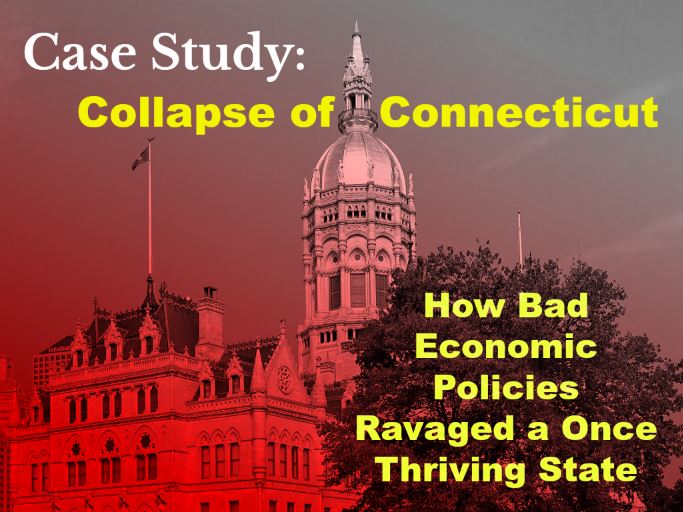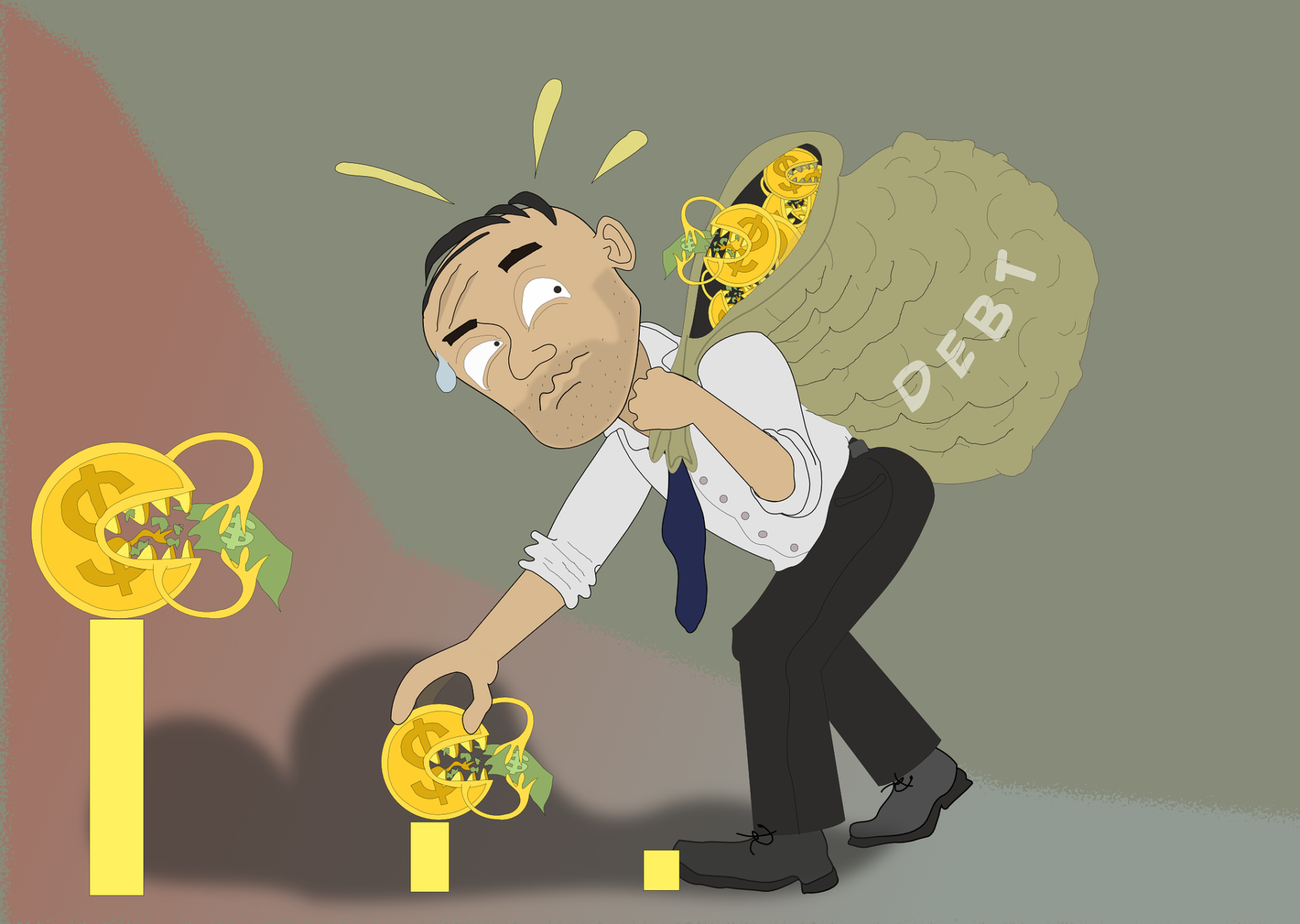Case Study: Collapse of Connecticut

Colonial New England?
A small,wealthy suburb state of New York City?
Home to Mark Twain, John Brown, Harriet Beecher Stowe, Noah Webster, P.T. Barnum or Samuel Colt?
How about debt? Fiscal irresponsibility?
How about a failing, over-regulated and overtaxed economy that has sent residents fleeing the state?
Welcome to modern-day Connecticut… where the economy is suffering, but you probably haven’t heard much about it.
Why?
Probably because pointing out the state’s dire economic state would harm the credibility of the economic policies that politicians and figureheads continue to hammer into the minds of young people that they work.
But here at Check Point, we wanted to check the facts and get to the point.
So here’s the question:
Why has Connecticut’s economy been declining so sharply and so many residents (and their taxpayer dollars) leaving the state?
Some people will point to the dying manufacturing industries that many of the state’s cities and municipalities relied on so heavily.
But blaming the state’s decline simply on its failing manufacturing industries would be both overly simplistic and naive since it fails to acknowledge that other states have encountered similar issues and yet continue to have thriving state economies.
So why does Connecticut continue to drown in debt and is unable to pay its bills?
The (over) simplified answer:
Incredibly high taxes, restrictive regulations, and fiscal irresponsibility in the form of uncontrolled budget spending.

“If you want evidence that highlights the need for free market, limited government public policy solutions, look no further than the state of Connecticut, which chose to follow the completely opposite approach.”
Analysts say state finances, unless adjusted, will run $1.6 billion in the red in the 2017-2018 fiscal year and $1.9 billion in deficit in 2018-19.1Furthermore, “all four of the major credit ratings agencies — Fitch Ratings, S&P Global, Moody’s Investors Service and Kroll Bond Rating Agency — have downgraded the state’s general obligation bond rating at least once since May 2016.”2
The lack of fiscal responsibility at the state level is rampant in Connecticut.
Not only does Connecticut tax its residents at an incredibly high rate, it takes that same hard-earned taxpayer money and spends it in incredibly unwise ways.
A recently completed $500 million bus way outside Hartford is just one example of an unnecessary project given the state’s current economic state.
The state has been able to generate $126 billion in revenue since it passed its income tax in 1991.
However (here is the catch): state government spending grew 71% faster than inflation between the same time period.3
To make matters worse, the constitutional spending cap, approved by 80% of voters in 1992 and passed in conjunction with the income tax, was never fully implemented by state lawmakers.4
The problem has only been worsened by the implementation of numerous economically harmful policies such as burdensome regulations (occupational licenses) and a disregard for private property (see Kelo vs. New London).
The refusal to deregulate the state’s economy by repealing many of these poorly constructed policies is a nod to how out of touch lawmakers in Hartford are with reality.
Out-migration continues to be a pressing problem for Connecticut’s government, further draining much needed taxpayer revenue.
A 2015 study by the Yankee Institute for Public Policy found that approximately $60 is leaving the state every second. 5
So the question becomes: do the people of Connecticut need to be better educated on these issues so they can hold their leaders more accountable (and not continue to re-elect bad decision makers)?
Either way, it seems that wealthy state of Connecticut has buried itself in an economic hole that is quickly collapsing around it.
Bad economic policies are much to blame for the increasing mess in Connecticut. The state may continue to turn a blind eye to its clearly failing economic strategy for now, but other states have certainly taken notice.
Other states have learned what Connecticut has still yet to.
Unfortunately, the majority of voters in Connecticut continue to elect and reelect the very same politicians whose policies and programs have largely contributed to the state’s economic decline.
Connecticut needs change. And it needs it fast.
Like this post? See more under our Economics tab!
By Kevin Kaufman
Sources:
1. https://ctmirror.org/2017/09/28/market-analysts-hartford-bankruptcy-could-have-contagion-effect/
2. https://ctmirror.org/2017/09/28/market-analysts-hartford-bankruptcy-could-have-contagion-effect/
3. http://www.yankeeinstitute.org/policy-papers/where-has-all-the-money-gone/
4. http://www.yankeeinstitute.org/policy-papers/where-has-all-the-money-gone/
5. http://www.yankeeinstitute.org/policy-briefs/60-a-second/
http://www.nationalreview.com/article/455193/daniel-malloy-connecticut-tax-spending-increases-insane





